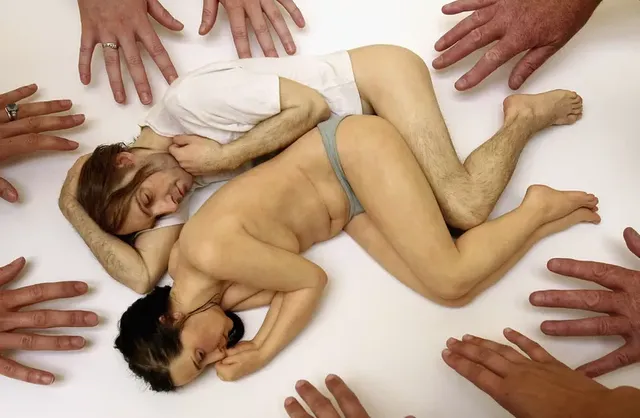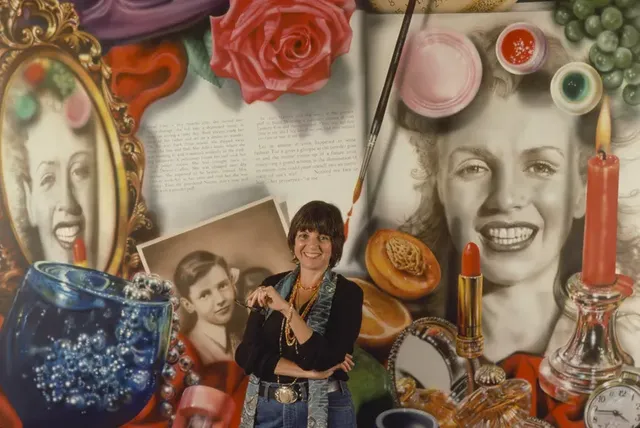Photorealism ◘ Realistic Styles in Modern Art
Realism is back. Realistic, or representational, art fell out of favor with the advent of photography, but today's painters and sculptors are reviving old techniques and giving reality a whole new spin.

"Spooning Couple" (2005), a Hyperrealistic Minature Sculpture Ron Mueck (Cropped). Photo by Jeff J Mitchell via Getty Images
#Photorealism
Artist Audrey Flack With Her Photorealistic Painting, "Marilyn," from her "Vanitas" Series, 1977 (Cropped). Photo by Nancy R. Schiff/Getty Images
Artists have used photography for centuries. In the 1600s, the Old Masters may have experimented with optical devices. During the 1800s, the development of photography influenced the Impressionist Movement. As photography became more sophisticated, artists explored ways modern technologies could help create ultra-realistic paintings.
The Photorealism Movement evolved during the late 1960s. Artists tried to produce exact copies of photographed images. Some artists projected photographs onto their canvases and used airbrushes to replicate details.
Early Photorealists like Robert Bechtle, Charles Bell, and John Salt painted photographic images of cars, trucks, billboards, and household items. In many ways, these works resemble the Pop Art of painters like Andy Warhol, who famously replicated supersized versions of Campbell's soup cans. However, Pop Art has a clearly artificial two-dimensional appearance, whereas Photorealism leaves the viewer gasping, "I can't believe that's a painting!"
Contemporary artists use photorealistic techniques to explore an unlimited range of subjects. Bryan Drury paints breathtakingly realistic portraits. Jason de Graaf paints irreverent still lifes of objects like melting ice cream cones. Gregory Thielker captures landscapes and settings with high-resolution detail.
Photorealist Audrey Flack (shown above) moves beyond the limitations of literal representation. Her painting Marilyn is a monumental composition of super-sized images inspired by the life and death of Marilyn Monroe. The unexpected juxtaposition of unrelated objects—a pear, a candle, a tube of lipstick—creates a narrative.
Flack describes her work as Photorealist, but because she distorts scale and introduces deeper meanings, she might also be classified as a Hyperrealist.
Read, Learn and Fun. #dikkatimicekti
